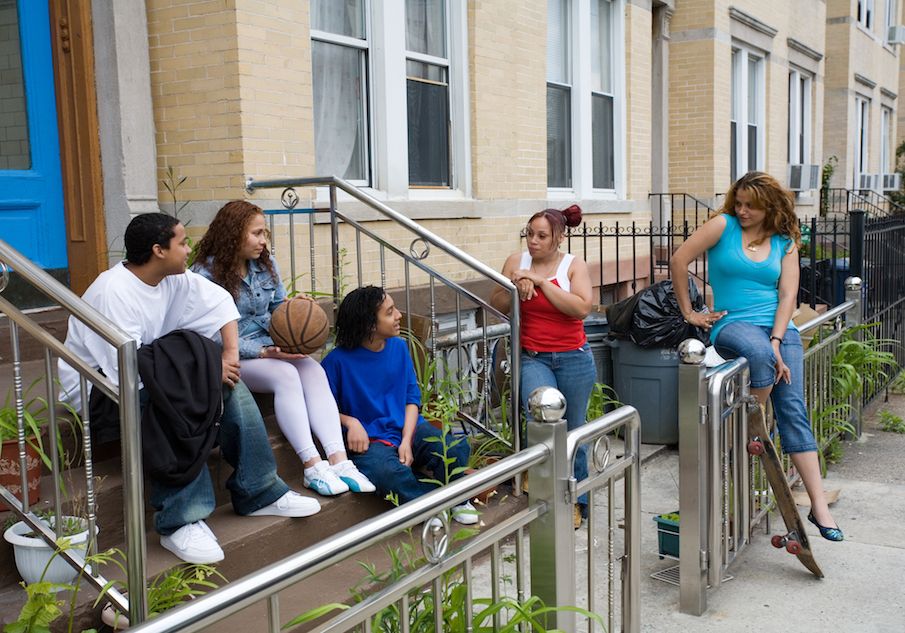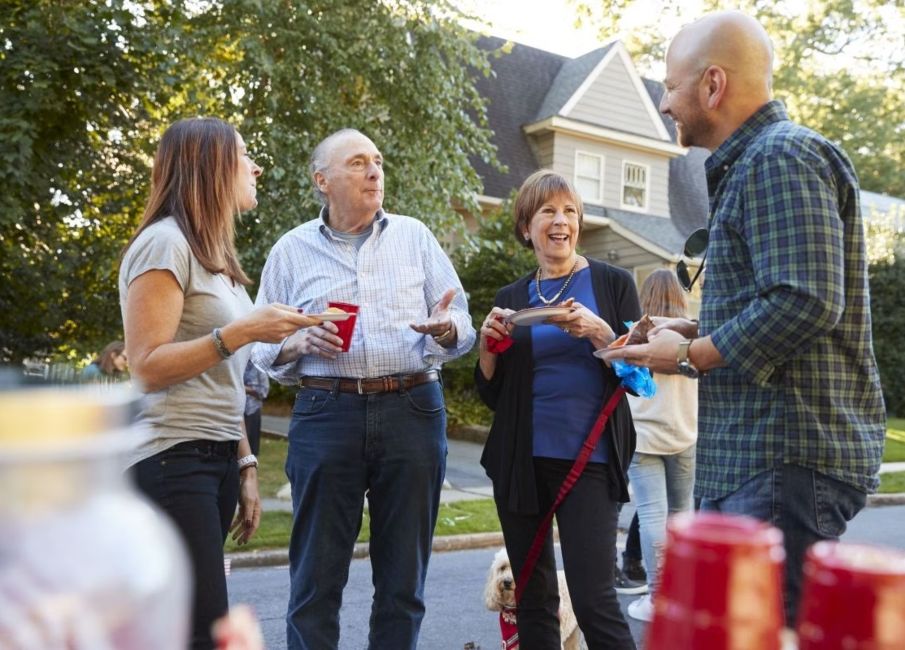
Building strong community ties is essential. It important to foster relationships with neighbors, vital organizations, and local businesses. The key lies in communication, collaboration, and lack of understanding. By actively engaging in community events, volunteering time, and supporting one another's endeavors, people can create a sense of unity and belonging. Trusting each other and showing empathy are also crucial components of building strong community ties. Ultimately, it is about coming together as a collective force to make positive changes and support one another through both challenging times and moments of celebration.
Neighborhoods are vibrant hubs of activity. Fostering community cohesion is vital in the UK. Strong neighborhoods contribute to a sense of community, providing support networks and shared values. This cohesion is integral for individuals, transcending career paths, to build a harmonious society that values interconnectedness and mutual understanding, promoting a thriving and unified community spirit across the United Kingdom. They are where people come together to live, work, and play. But what makes some neighborhoods thrive while others struggle? One key factor is community cohesion.
Community cohesion is the sense of belonging and connection that residents feel towards each other. It is about building relationships, fostering trust, and working together towards common goals. When communities have strong levels of cohesion, they are better able to address challenges, support one another in times of need, and create a sense of shared identity.
But achieving community cohesion is not always easy. There are many factors that can impact a neighborhood's ability to come together as a cohesive unit. These can include differences in culture, language barriers, socioeconomic disparities, and even physical barriers like highways or busy streets.
Despite these challenges, there are ways to promote community cohesion in neighborhoods. One way is through regular communication and engagement with residents. This can be done through community meetings, events, or social media groups where neighbors can connect with one another and share information.
Another important factor in fostering community cohesion is promoting inclusivity and diversity within the neighborhood. By celebrating different cultures, traditions, and perspectives, communities can create a more welcoming environment for all residents.
Overall, community cohesion plays a vital role in helping neighborhoods thrive. By building strong relationships and connections among residents, communities can work together to overcome challenges and create a sense of unity that benefits everyone who calls the neighborhood home.

Creating a close-knit neighborhood is essential. It's not just about having friendly neighbors, but also about fostering a sense of community and support among residents. So, how can you uncover the secret behind building such a neighborhood?
First and foremost, communication is key. Open lines of communication between neighbors can help build trust and understanding. This could involve something as simple as starting a neighborhood watch group or setting up a community bulletin board where residents can share information and resources.
Next, empathy plays a crucial role in creating a supportive neighborhood. By putting yourself in your neighbor's shoes and trying to understand their perspective, you can build stronger relationships and create a more harmonious atmosphere within the community.
Another important factor is inclusivity. Making sure that everyone feels welcome and included in the neighborhood can go a long way towards fostering a sense of belonging and unity among residents. This could involve organizing regular social events or activities that bring people together and encourage interaction.
Furthermore, collaboration is key to building a close-knit neighborhood. By working together on projects or initiatives that benefit the community as a whole, residents can develop bonds with one another and create a sense of shared purpose.
Lastly, transparency is essential for maintaining trust and cohesion within the neighborhood. Being honest and open with your neighbors about any issues or concerns can help prevent misunderstandings and foster an environment of mutual respect.
Creating a close-knit and supportive neighborhood requires effort from all residents. By prioritizing communication, empathy, inclusivity, collaboration, transparency , you can uncover the secret to building strong community ties that will last for years to come.


Building strong bonds in your community is essential for fostering a sense of belonging and unity among its residents. Neighborhoods play a crucial role in promoting community cohesion by bringing people together, creating opportunities for social interaction, and fostering a spirit of collaboration.
One way to build stronger bonds in your community is to organize regular neighborhood events such as block parties, potlucks, or community clean-up days. These events provide an opportunity for residents to come together, get to know each other better, and strengthen their connections with one another. By participating in these activities, residents can develop a sense of ownership and pride in their neighborhood, which can lead to greater cooperation and support among neighbors.
Another way to build stronger bonds in your community is to encourage communication and collaboration among residents. This can be done through neighborhood meetings, online forums, or social media groups where residents can share information, discuss issues affecting the community, and work together to find solutions. By promoting open dialogue and engagement, neighborhoods can create a more inclusive and connected community where everyone has a voice and feels heard.
In addition to organizing events and encouraging communication, it is also important for residents to take an active role in their neighborhood by volunteering their time and resources to support local initiatives. Whether it's helping out at a local food pantry, participating in a neighborhood watch program, or organizing a fundraiser for a community project, there are many ways that residents can contribute to building stronger bonds within their neighborhood.
Overall, building stronger bonds in your community requires effort from all residents. By coming together, communicating openly, and working collaboratively towards common goals, neighborhoods can create a more cohesive and supportive community where everyone feels valued and connected. So let's work together to strengthen the bonds that bind us all!
Creating a welcoming and inclusive neighborhood is crucial for fostering a sense of community cohesion. By embracing diversity and promoting unity, residents can come together to build strong relationships and support one another.
One key aspect of creating a welcoming neighborhood is communication. It's important for neighbors to openly communicate with one another, listen to each other's perspectives, and work towards common goals. This can help bridge any divides and create a more harmonious environment where everyone feels valued and respected.

Another important factor in fostering inclusivity is engaging in activities that bring people together. Neighborhood events, block parties, and community projects can all help residents connect with one another and build bonds that transcend differences. By working towards shared objectives, neighbors can develop a sense of belonging and pride in their community.
Additionally, it's essential for residents to be proactive in addressing any issues or conflicts that may arise. By approaching challenges with an open mind and a willingness to find solutions, neighbors can prevent misunderstandings from escalating and create a more peaceful living environment for everyone.
Creating a welcoming and inclusive neighborhood requires effort from all residents. By embracing diversity, communicating openly, engaging in community activities, and resolving conflicts peacefully, neighbors can come together to build a strong sense of community cohesion. Ultimately, by working together towards common goals, residents can ensure that their neighborhood remains inclusive and welcoming for all who call it home.
In today's fast-paced world, fostering unity and connection in our local communities is more important than ever. With the rise of technology and social media, it can be easy to feel disconnected from those around us. However, building strong relationships with our neighbors is essential for creating a sense of belonging and community cohesion.
